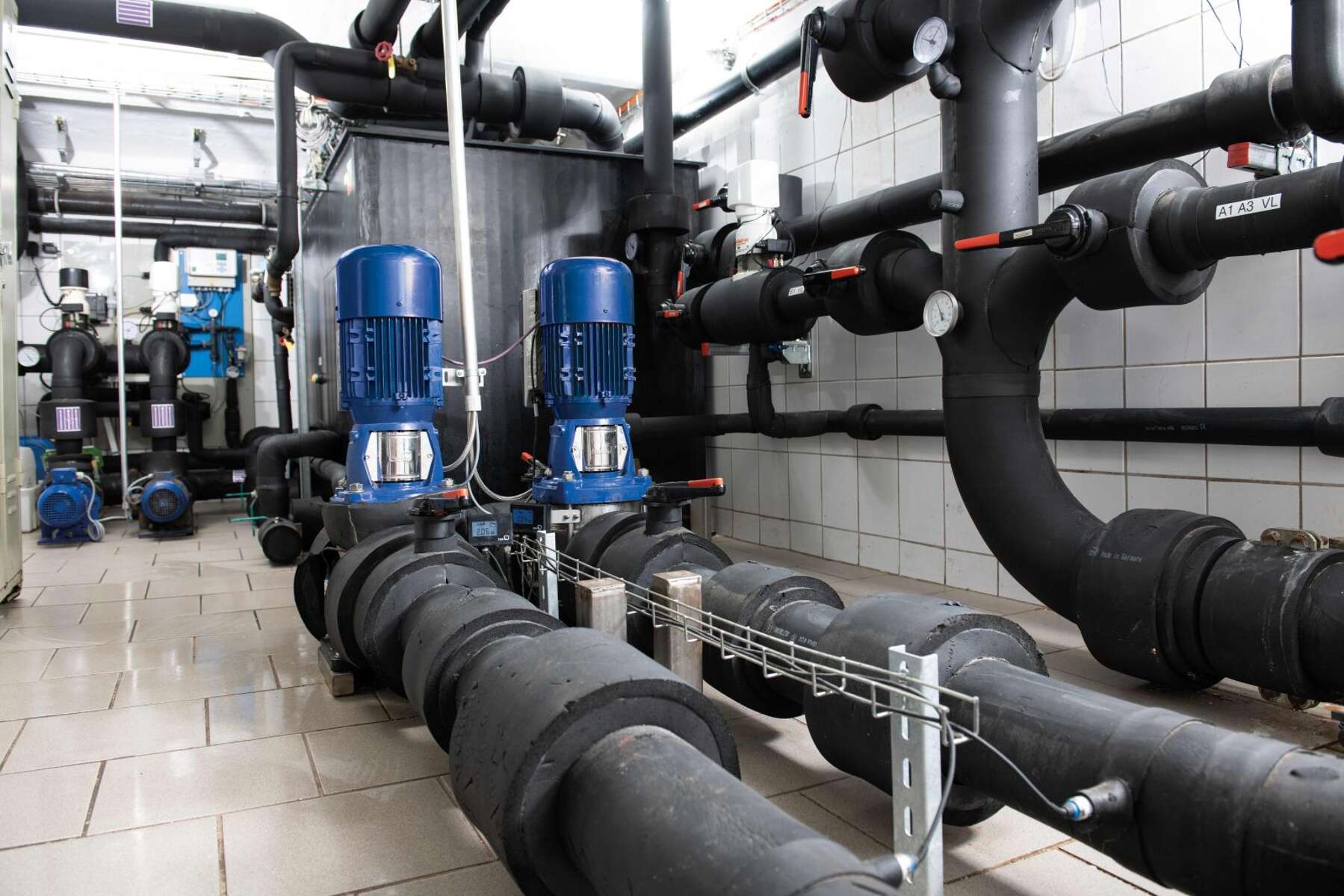
Valves in building services applications: types, functions and selection
What is a valve?
What are the different types of valves?
Product images of KSB's STAAL 40 AKD/AKDS gate valves
Product images of KSB's STAAL 100 AKD/AKDS gate valves
Product images of BOA-Control / BOA-Control IMS valves
Product image of an ECOLINE BLT 150-300 valve
Product image of a BOAX-S/SF valve
Product image of a SISTO-16 TWA valve
Product image of KSB's SERIE 2000 valve
Product image of KSB's BOA-S strainer
Key characteristics
The Kv value corresponds to the water flow through a valve at:
- Differential pressure of 1 bar
- Temperature between 5 °C and 30 °C.
In 10 steps to the right valve at the example of a data centre
Suitable valves:
Suitable valves:
In our example, the system pressure is approx. 8 bar. The planned nominal pressure class of the piping is PN 16.
Suitable valves:
Suitable valves:
Suitable valves:
For us, space is very limited. The more compact the valve installation, the better. In the case of a 1:1 replacement for existing valves, identical design is important. In our example, this means two further valves are no longer in the race.
Suitable valves:
Suitable valves:
Suitable valves:
Projects are governed by budget planning and the investors' desired security. What counts is: as cost-efficient as possible while meeting the requirements. Availability and interchangeability are further key criteria. A ball valve in DN 32 or DN 50 would be cheaper than a butterfly valve that has to be flanged into the piping. However, this option is not suitable for the flow rate of 200 m3/h (DN 150) in our cooling circuit example. We require a valve meeting DN 150. This eliminates the last option in the selection.
What are the benefits of each valve type?
Looking for the right valve? KSB is here to help
Used products
STAAL 100 AKD/AKDS
Gate valve to DIN/EN with flanged ends (AKD) or butt weld ends (AKDS), with bolted bonnet, body of forged or welded construction, non-rotating stem, split wedge with flexibly mounted discs for precise alignment with the body seats. Seat/disc interface made of wear and corrosion resistant 17 % chrome steel or Stellite.
STAAL 100 AKK/AKKS
Swing check valve to DIN/EN with flanged ends (AKK) or butt weld ends (AKKS), with bolted cover, internally mounted hinge pin, body of forged or welded construction, seat/disc interface made of wear and corrosion resistant 17 % chrome steel or Stellite.
STAAL 40 AKD/AKDS
Gate valve to DIN/EN with flanged ends (AKD) or butt weld ends (AKDS), with bolted bonnet, body of forged or welded construction, non-rotating stem, split wedge with flexibly mounted discs for precise alignment with the body seats. Seat/disc interface made of wear and corrosion resistant 17 % chrome steel.
STAAL 40 AKK/AKKS
Swing check valve to DIN/EN with flanged ends (AKK) or butt weld ends (AKKS), with bolted cover, internally mounted hinge pin, body of welded construction, seat/disc interface made of wear and corrosion resistant 17 % chrome steel.
BOA-Control/ BOA‑Control IMS
Balancing, measurement and shut-off valve with flanged ends to DIN/EN, constant measurement accuracy independent of differential pressures. Body in standard face-to-face length to EN 558/1, throttling plug, scaled position indicator, travel stop and insulating cap with anti-condensation feature; maintenance-free, full insulation possible. Also available with electrostatic plastic coating (EKB) and DVGW-certified for drinking water. With integrated ultrasonic sensors not coming into contact with the fluid handled. Stationary monitoring by means of BOATRONIC 100 MOD (24 V AC/DC, Modbus) of flow direction, volume flow rate and temperature, and optional recording of supply and return temperature as well as thermal output and quantity of heat. Mobile measurement of flow direction, volume flow rate and temperature using the BOATRONIC 100 measuring computer (rechargeable battery powered).
ECOLINE BLT 150-300
Ball valve to ANSI/ASME with flanged ends, two-piece body, full bore, floating ball, plastomer sealing (also in fire-safe design).
BOAX-S/SF
Centred-disc butterfly valve with ISO 5211 compliant square shaft end for butterfly valves from DN 350, with heat barrier and elastomer liner (EPDM XU or nitrile K), with lever, manual gearbox or electric actuator (BOAXMAT-S and BOAXMAT-SF); semi-lug body (T2) or full-lug body (T4) for downstream dismantling and dead-end service. Valve disc made of stainless steel 1.4308, connections to EN.
SISTO-16TWA
Weir-type diaphragm valve to DIN/EN with flanged ends, straight-way pattern, for drinking water installations to DIN 1988, DIN-DVGW-approved for water acc. to test W 270, in compliance with the latest elastomers guideline of the German Environment Agency; shut-off and sealing to atmosphere by confined and supported SISTOMaXX diaphragm; position indicator with integrated stem protection. All moving parts are separated from the fluid by the diaphragm. Maintenance-free.
SERIE 2000
Dual-plate check valve with single-piece, wafer-type body made of lamellar graphite cast iron, nodular cast iron, steel or stainless steel; metal/elastomer-seated or metal/metal-seated, maintenance-free, connections to EN, ASME or JIS.
BOA-S
Strainer to DIN/EN with flanged ends, with standard or fine screen; all nominal sizes with drain plug in the cover. Made of grey cast iron or nodular cast iron.